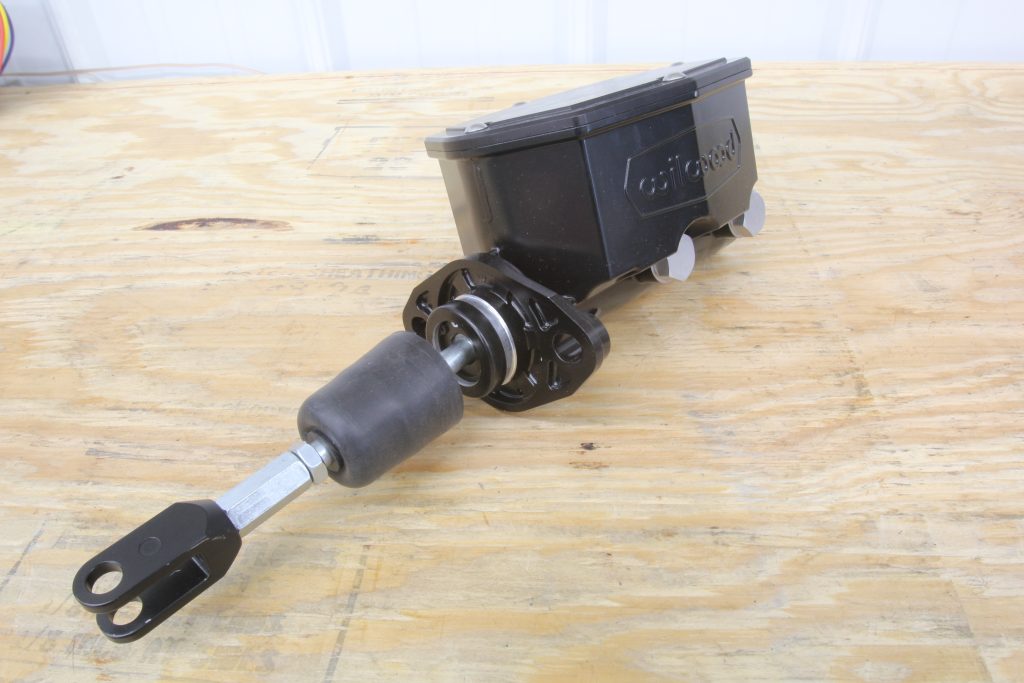I just bought a small block 1966 El Camino that has had some modifications with an engine swap and a front disc brake conversion. The guy who sold it to me wasn’t happy with the way the car ran and was frustrated with it, so I got a pretty good deal. The first thing I noticed is that after I drive it for only about five miles, the car seems sluggish and slows down quickly when I lift off the throttle—like the brakes are on, but I’m not touching the brake pedal.
I pulled over after driving a little further and I could tell the front brakes were really hot. Why would the brakes be on all the time if I’m not touching the brake pedal?
L.C.
When adding disc brakes to an early Chevelle, this can cause problems from two different directions. Depending upon the style of master cylinder that you chose, there will either be a deep recess or a small one in the piston located in the master cylinder.
The original factory single reservoir master cylinder used a deep recess in the piston that captured the pushrod that extends from the clevis bolted to the brake pedal. This recess was deep enough that it was not possible for the pedal to be retracted enough that the pushrod could fall out.
With something as simple as a manual disc brake master conversion, sometimes the recess in the master cylinder is deeper, which requires lengthening the adjuster on the master cylinder pushrod. If the amount of adjustment is not sufficient, there will be too much free play between the plunger and the master cylinder piston. This will cause the pedal to feel weird. Some people think that the system is full of air when in fact it’s just excess clearance in the mechanical application of the brakes.
Your problem is exactly the opposite. The master cylinder that was installed on the car probably had a more shallow recess in the master cylinder piston. Then, when the master was bolted to the car, the pushrod from the brake pedal was too long and pressed slightly into the master cylinder piston, applying pressure to the brakes. This lightly applied the pads against the rotor all the time. So when you drove the car, this was like dragging the brakes while driving. It does not take much distance to heat up the brakes.
As the system warms, this takes all the clearance out of the system as the parts expand and pretty soon the brakes are really hot and applying even more pressure—as if you had your food on the brake pedal just as you described.

The Solution is Simple
Remove the clevis pin from the brake pedal and remove the clevis ad adjustment rod. There should be some amount of adjustment threads left on the pushrod to allow you to shorten the actuation rod. If there is not enough adjustment to properly shorten the rod, then remove it from the clevis and cut off roughly a half inch from the threads and then use the appropriate size thread die to cut additional threads in the rod.
This should shorten the length to allow you to insert it into the master cylinder with some minor adjustment until you have a minimal amount of free play—roughly 1/8- to 1/16-inch between the brake pedal and the master cylinder piston. This should solve your problem. Make sure the brake pads have not been glazed by the heat generated. If the brake pad friction surface looks shiny or glossy, they are probably glazed and will need to be replaced.
If you find the clevis or other parts are not sufficient, Wilwood offers a master cylinder clevis pin kit that can be helpful when installing a non-stock master into your car. Summit Racing carries the kit under PN WIL-330-13914.
We’ve had really good experience with Yellowstuff EBC brake pads, but there are dozens of pads to choose from for street cars.
EBC brake pads are differentiated by color and the Yellowstuff pads seem to work well on the street. The EBC pads come with a rough surface on the pad that is intended to clean the glazed surface on the rotor that will allow the pads to break-in properly. EBC offers a recommendation for a break-in procedure that you should follow to complete the conversion that will offer the best performance from whichever brake pad you choose.

Comments